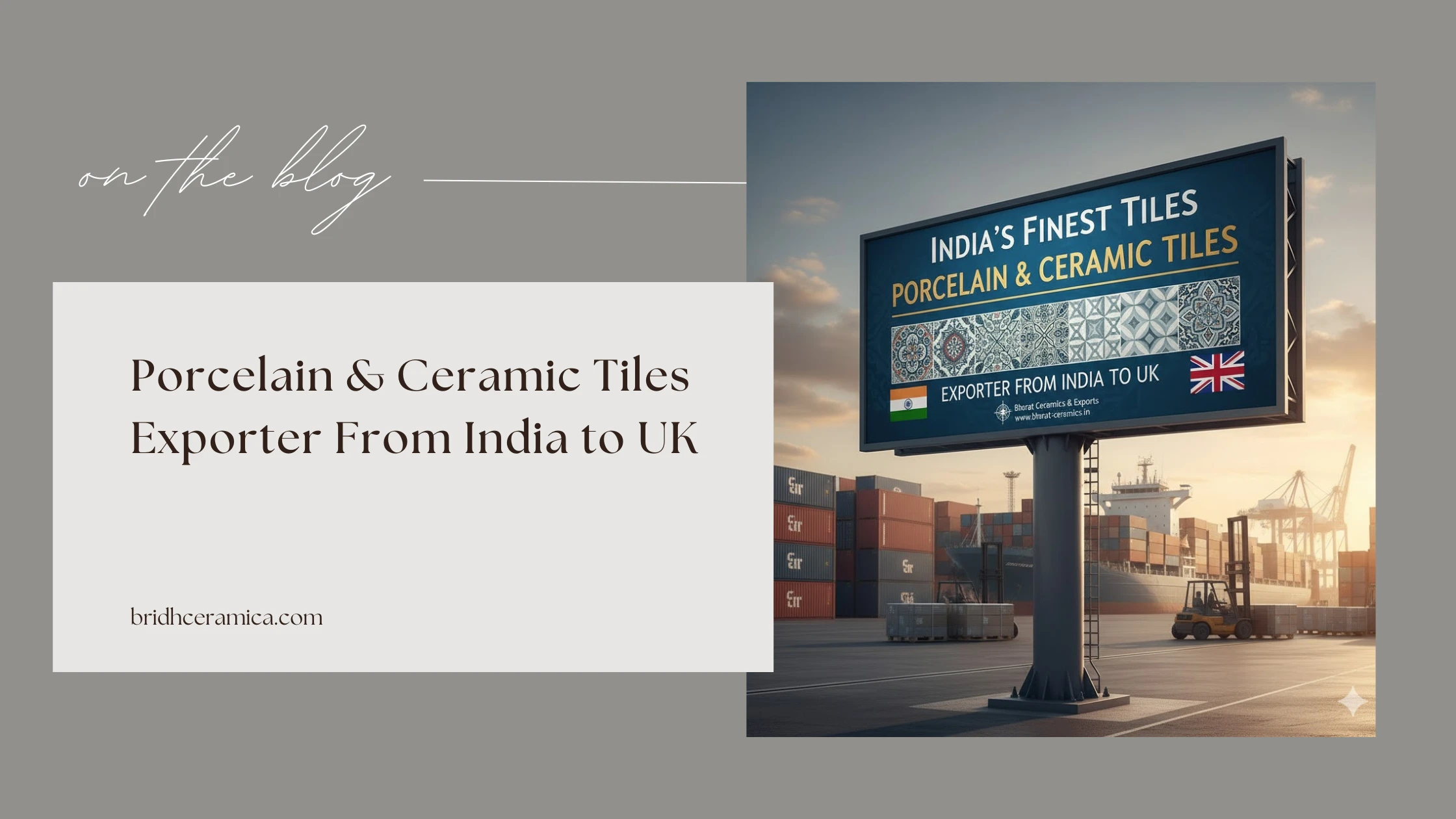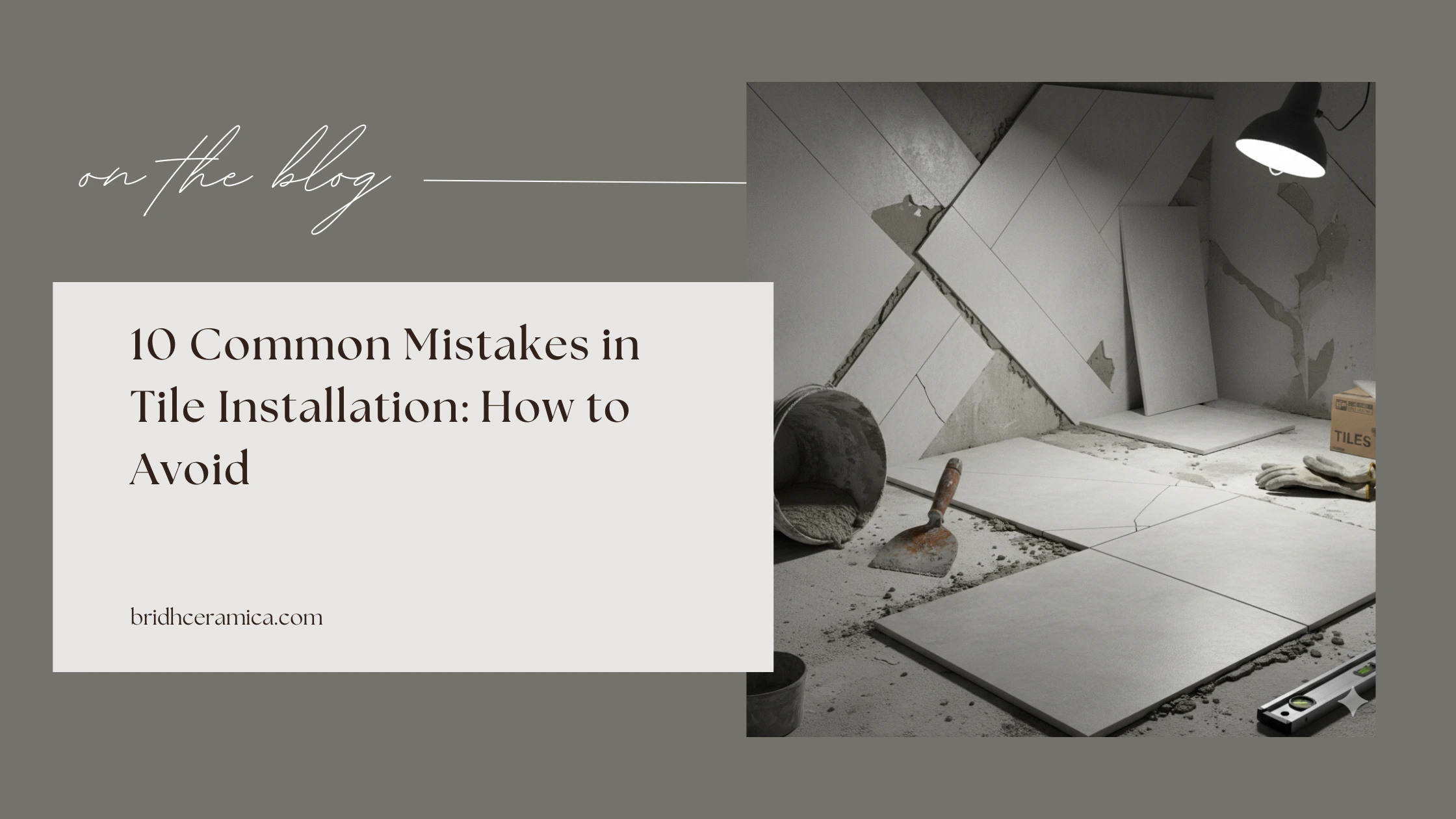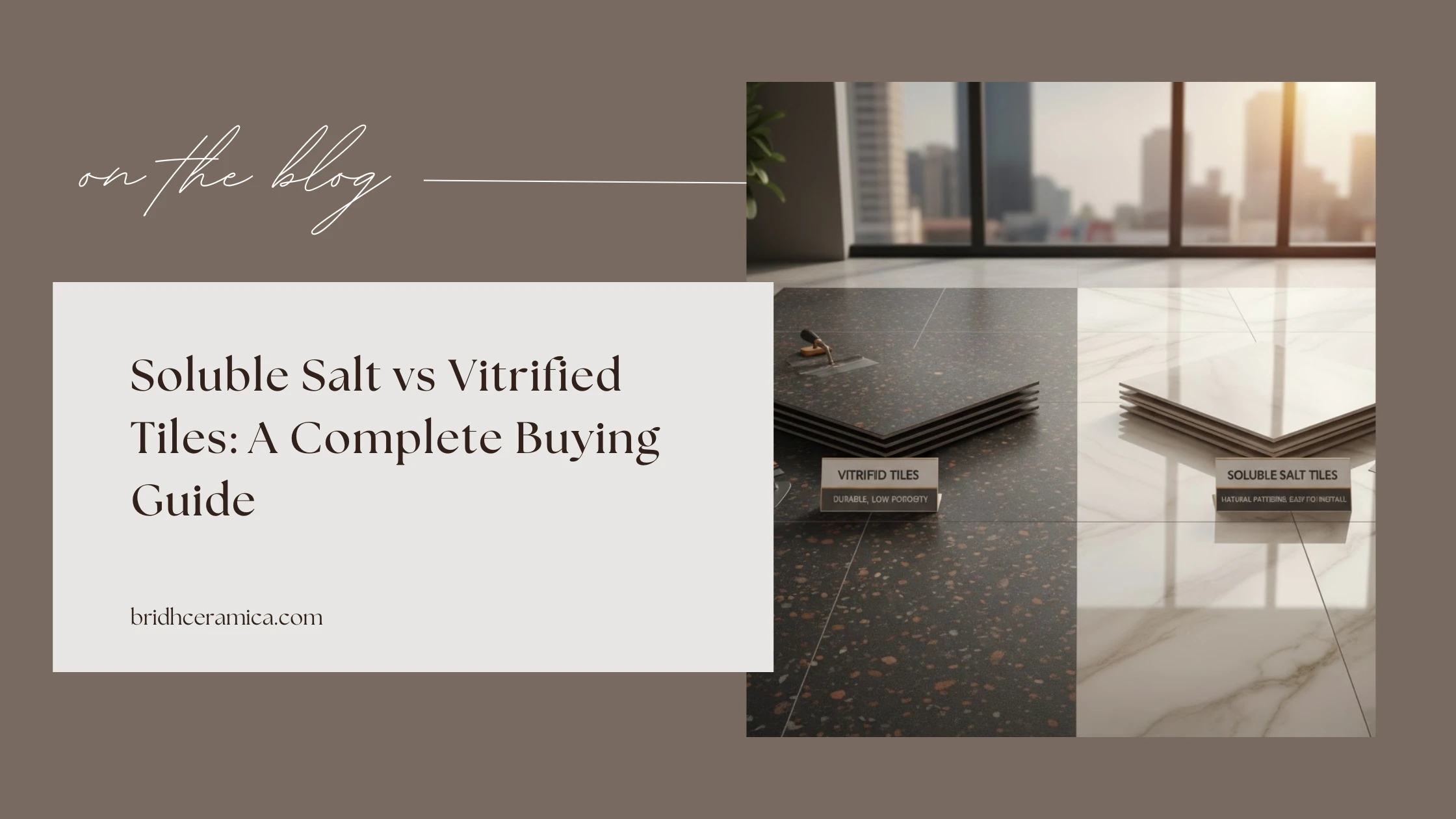9mm vs 12mm vs 15mm: Porcelain Slab Thickness Guide
Nov 06, 2025Connect With Our Team
When designing or renovating your space, selecting the right tiles can feel overwhelming. Among the many options available, soluble salt tiles and vitrified tiles are two of the most common choices for both homeowners and commercial builders.
While both options look elegant and durable, they differ significantly in terms of manufacturing technology, performance, and cost. Understanding these differences can help you choose the best option for your needs.
In this complete buying guide, we’ll break down every aspect of soluble salt vs vitrified tiles from composition and durability to applications and price to help you make an informed decision.
What Are Soluble Salt Tiles?
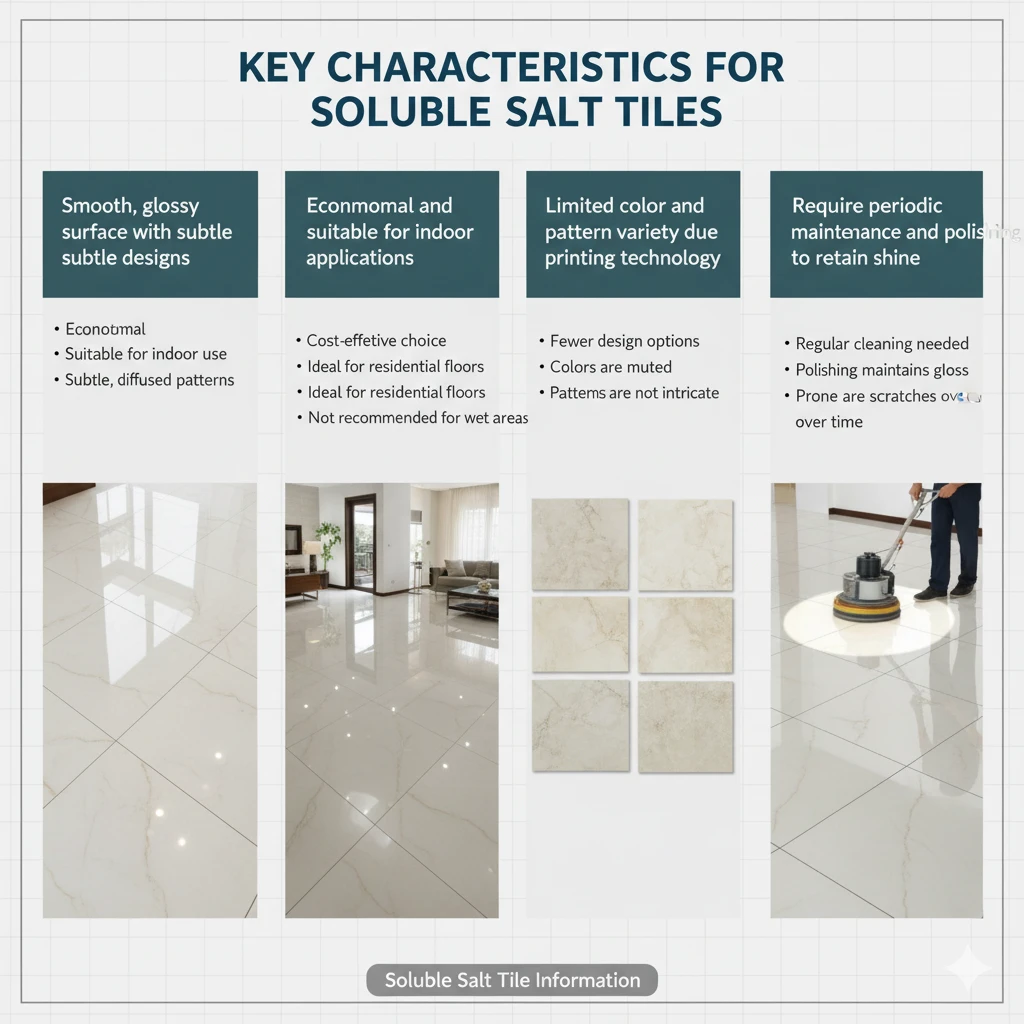
Definition and Manufacturing Process
Soluble salt tiles are polished vitrified tiles made using a screen-printing technique where salts are used to create designs on the tile surface. The tile’s upper layer is infused with soluble salts that penetrate and form patterns when fired in the kiln.
The manufacturing process involves pressing clay, quartz, and feldspar mixtures under high pressure, printing designs with soluble salts, and then firing the tiles at around 1,200°C. After firing, the surface is polished to give it a glossy finish.
Key Characteristics
-
Smooth, glossy surface with subtle designs
-
Economical and suitable for indoor applications
-
Limited color and pattern variety due to printing technology
-
Require periodic maintenance and polishing to retain shine
Screen Printing Technology
The defining feature of soluble salt tiles is their screen printing process, where mineral salts are dissolved and infused into the surface before firing. This process creates delicate patterns but limits design depth and wear resistance.
Understanding Vitrified Tiles
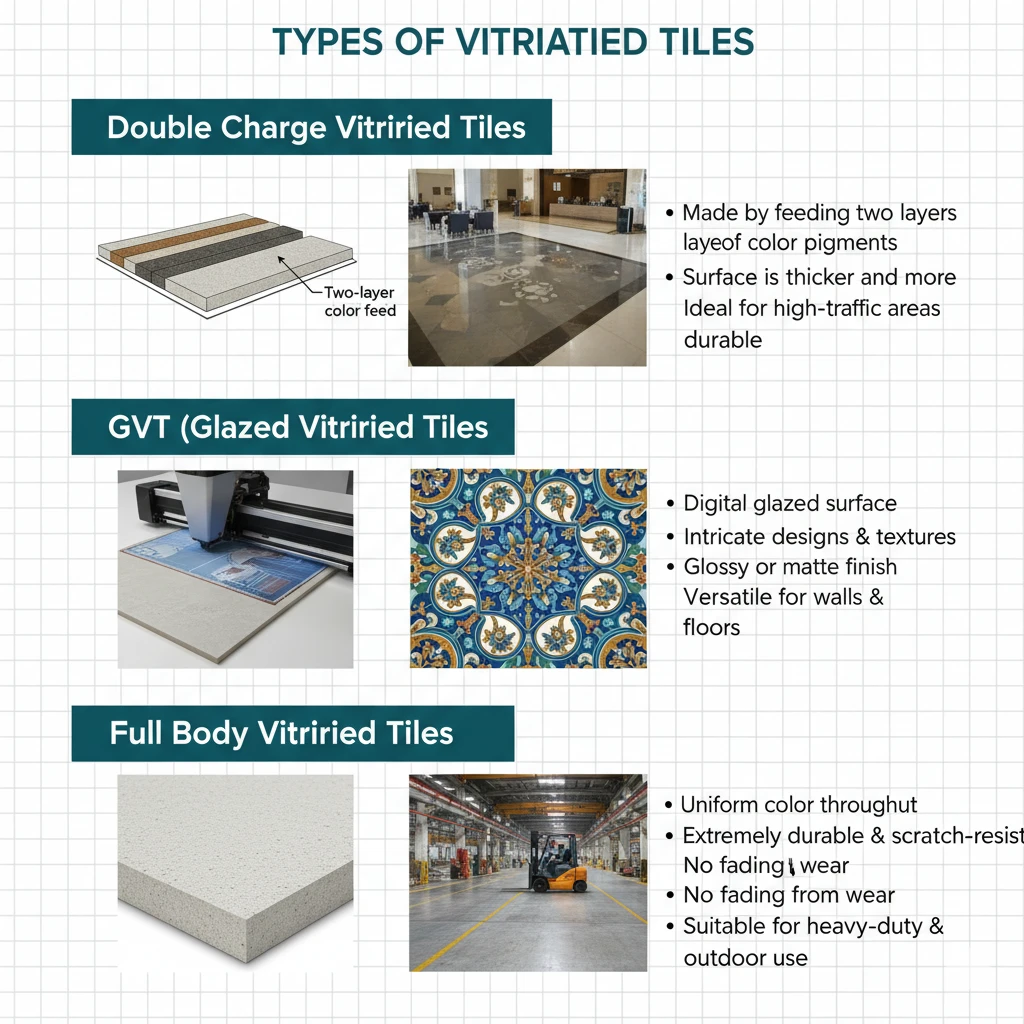
Definition and Vitrification Process
Vitrified tiles are a step above regular ceramic or soluble salt tiles. They undergo a vitrification process, where silica and clay are fused at high temperatures to form a glass-like, non-porous surface. The result is a dense, highly durable tile that resists stains, scratches, and water absorption.
Vitrified tiles are known for their strength, low porosity, and long-lasting polish, making them ideal for both residential and commercial use.
Types of Vitrified Tiles
-
Double Charge Vitrified Tiles: Made by feeding two layers of color pigments, making the surface thicker and more durable.
-
GVT (Glazed Vitrified Tiles): Feature a digital glazed surface that allows intricate designs and textures.
-
Full Body Vitrified Tiles: Have uniform color and pattern throughout the tile, making them resistant to visible wear and tear.
Manufacturing Differences
Unlike soluble salt tiles, vitrified tiles don’t rely on soluble printing. Instead, they use advanced digital printing or multiple charging techniques that provide deeper color penetration and longer-lasting patterns.
What Is the Manufacturing Difference Between Soluble Salt and Vitrified Tiles?
The major difference lies in technology and composition.
| Feature | Soluble Salt Tiles | Vitrified Tiles |
|---|---|---|
| Process | Screen printing with mineral salts | Vitrification (fusion of clay and silica) |
| Surface Design | Printed on top layer | Deep or full-body color |
| Durability | Moderate | High |
| Maintenance | Requires regular polishing | Low maintenance |
| Porosity | Slightly porous | Highly non-porous |
Soluble salt tiles are manufactured using basic equipment, while vitrified tiles involve advanced technologies like digital printing, twin press, or glazing machines, which enhance strength and aesthetics.
Which Tiles Are More Durable: Soluble Salt or Vitrified Tiles?
When it comes to durability, vitrified tiles clearly outperform soluble salt tiles.
-
Vitrified tiles are denser, stronger, and more resistant to wear, scratches, and moisture. They can handle high foot traffic and extreme weather conditions without losing their shine.
-
Soluble salt tiles, on the other hand, are best suited for light to moderate traffic areas such as bedrooms, living rooms, or small offices.
If you’re planning flooring for commercial spaces, malls, or outdoor areas, vitrified tiles especially double charge or full body variants are a much better investment.
Are GVT Tiles Better Than Soluble Salt Tiles?
-
Design Versatility: GVT tiles allow for digital prints, matt, glossy, or textured finishes.
-
Application: GVTs are preferred for stylish interiors and areas needing richer designs.
-
Finish Options: Soluble salt tiles are mostly glossy, while GVTs provide numerous finish choices.
Full Body Vitrified Tiles: Key Points

-
Uniform Composition: Colour/pattern runs through the entire tile, not just on the surface.
-
Advantages: Extreme durability; scratches or chips hardly noticed; never fades.
-
Ideal Uses: High-traffic, commercial, and outdoor spaces.
Which Tiles Work Best for Different Applications?
| Application Area | Recommended Tile Type | Reason |
|---|---|---|
| Kitchen Flooring | Double Charge or GVT Tiles | Resistant to stains and scratches |
| Bathrooms | GVT or Soluble Salt Tiles | Water-resistant and easy to clean |
| Commercial Spaces | Full Body or Double Charge Tiles | High strength and durability |
| High-Traffic Areas | Full Body Vitrified Tiles | Wear-resistant and long-lasting |
| Bedrooms & Living Rooms | Soluble Salt or GVT Tiles | Elegant finish and cost-effective |
Choosing the right tile type depends on your design needs, maintenance expectations, and budget.
Cost Comparison: Soluble Salt vs Different Vitrified Tiles
Price Ranges
-
Soluble Salt Tiles: ?25–?40 per sq. ft.
-
Double Charge Vitrified Tiles: ?40–?70 per sq. ft.
-
GVT Tiles: ?50–?90 per sq. ft.
-
Full Body Vitrified Tiles: ?70–?150 per sq. ft.
Value for Money
While soluble salt tiles have a lower upfront cost, vitrified tiles offer greater durability and design versatility, reducing long-term maintenance expenses.
Long-Term Investment
If you’re renovating a space that needs long-lasting appeal like a commercial building or a luxury home vitrified tiles are worth the investment. For budget-friendly projects, soluble salt tiles provide an attractive and practical alternative.
Conclusion
Both soluble salt and vitrified tiles have their place in modern interiors. Soluble salt tiles offer affordability and simplicity, making them ideal for low-traffic residential spaces. On the other hand, vitrified tiles whether double charge, GVT, or full body deliver superior performance, design flexibility, and longevity.
In short:
-
Choose Soluble Salt Tiles for budget-friendly, low-traffic indoor areas.
-
Go for Double Charge or GVT Tiles for stylish, durable floors in medium to high-traffic spaces.
-
Opt for Full Body Vitrified Tiles when you need unmatched strength and uniformity.
By understanding your project’s needs and comparing these options carefully, you can achieve the perfect balance between beauty, durability, and cost-efficiency.
Whatsapp Chatx
Hi! Click one of our representatives below to chat on WhatsApp or send us email to dhaval@bridhceramica.com

|
************** +91 97023 82809 |
 TILES VIEW
TILES VIEW

